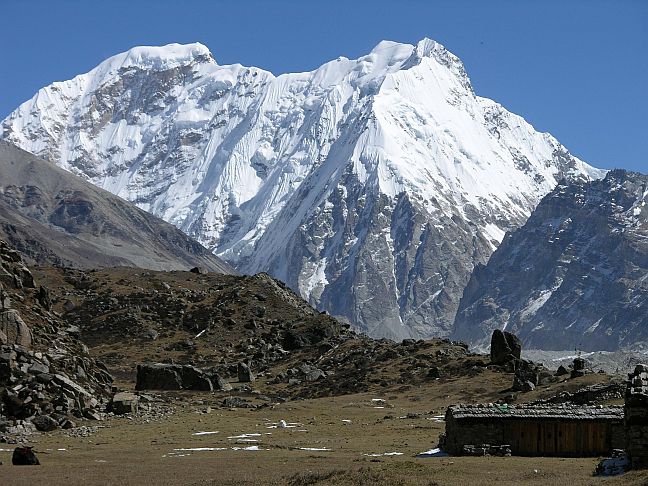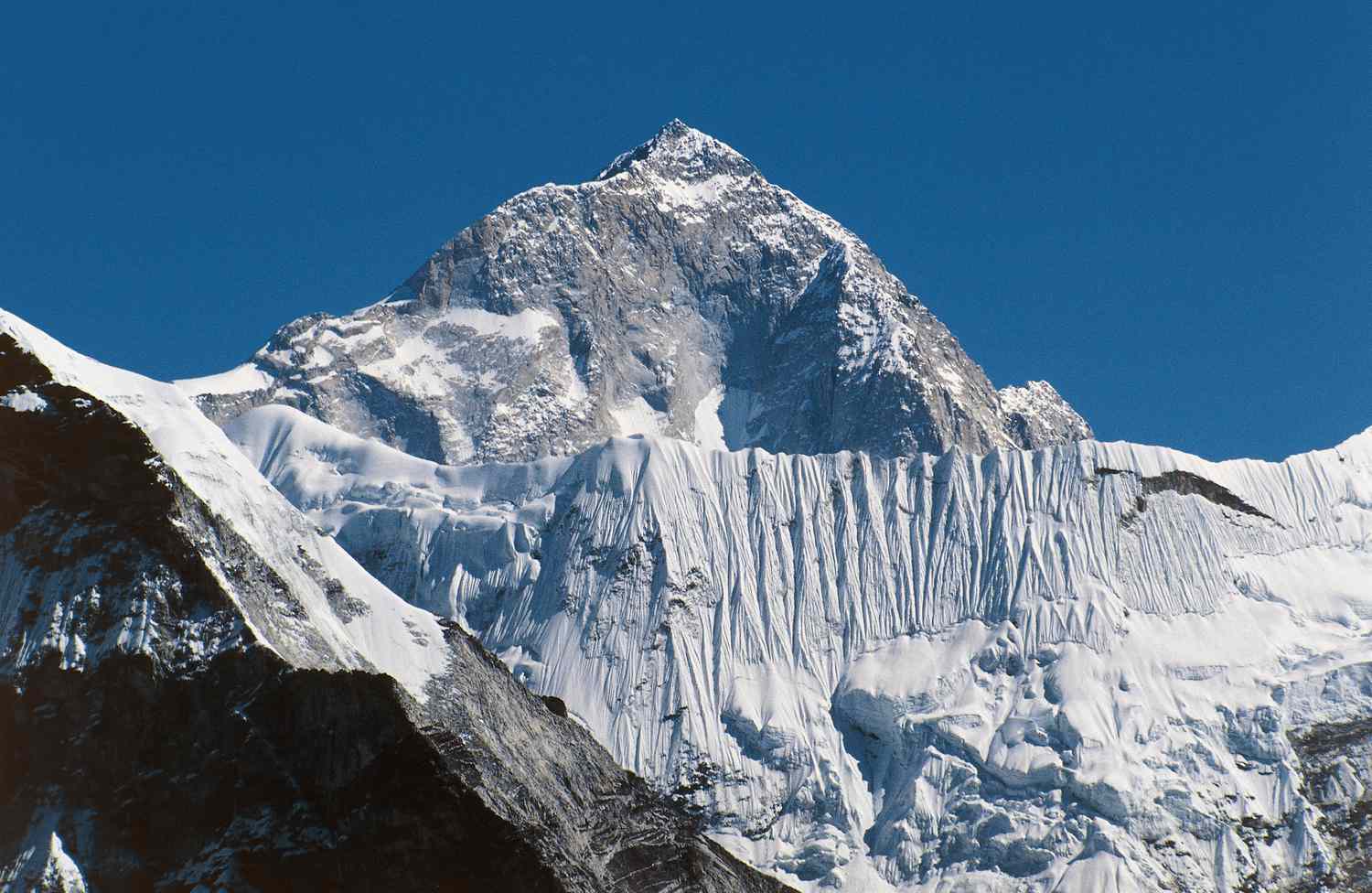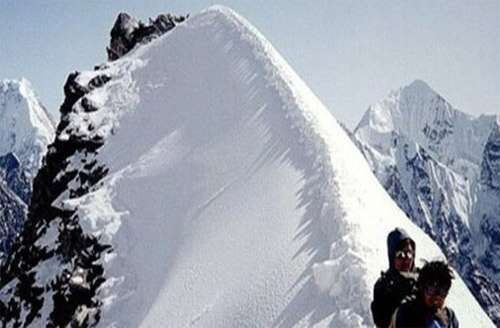
Best time to Climb Mountain in Nepal
The Best Time to climb a mountain in Nepal relies upon numerous elements, such as the unique mountain you plan to ascend, your climbing experience and ability stage, and your personal options. However, in trendy areas, there are two essential Climbing seasons in Nepal: The spring season and the autumn season. Likewise, each season has its very own advantages and disadvantages, and the satisfactory time for you can range primarily based on your goals and options.
1. Spring Season (March to May):

- Weather: Spring is considered the Best time to climb a mountain in Nepal due to its stable climate. Similarly, the skies are typically clean, and temperatures are pretty moderate at decreasing elevations. Likewise, this season is characterized by warm days and funky nights, making it perfect for excessive-altitude climbs.
- Temperature: At decreasing altitudes, daylight temperatures can vary from 20°C to 25°C (68°F to 77°F), even as midnight temperatures can drop to -10°C to -15°C (14°F to 5°F) or lower at higher elevations.
- Climbing Peaks: Spring is the best season for climbing the world’s highest Mountain, Mount Everest (8,848.86 meters), and different Eight-thousander Mountains like Lhotse, Makalu, Manaslu, Kanchenjunga and Cho Oyu. Similarly, it’s additionally a popular time for hiking a lot of Nepal’s trekking peaks and different mountains.
- Vegetation: The spring season brings colorful blooms and luxurious plant life, making the decrease in trekking routes extra picturesque.
- Crowds: Spring is the most famous time for hiking in Nepal so you can count on greater climbers on famous routes and at base camps. However, this additionally approaches better infrastructure and offerings, along with fully stocked base camps and extra mountain climbing help.
2. Autumn Season (September to November):

- Weather: Autumn is the Best time to climb mountains in Nepal, with strong climate situations. The skies are generally clear, and the weather is dry. Furthermore, this season features mild temperatures and minimal precipitation.
- Temperature: Daytime temperatures at lower elevations can range from 15°C to 20°C (59°F to 68°F), even as middle-of-the-night temperatures are cooler. Higher altitudes can have chillier temperatures.
- Climbing Peaks: Autumn is the second most popular season for climbing in Nepal and is appropriate for most peaks, together with Everest and different 8,000-meter peaks.
- Visibility: Autumn gives awesome visibility, permitting climbers to revel in breathtaking perspectives of the encircling mountains.
- Crowds: While there are still many climbers throughout the autumn season, it’s commonly less crowded than in spring, presenting a greater non-violent mountaineering reveal.
3. Monsoon Season (June to August):

- Monsoon season isn’t the Best time to climb a mountain in Nepal. Heavy rains, thick clouds, and excessive humidity can create risky conditions, avalanches, and landslides.
4. Winter Season (December to February):

- Winter is not the Best time to climb a mountain in Nepal due to extremely cold temperatures, heavy snowfall, and vicious situations at high altitudes. Moreover, only a few specialized wintry weather expeditions attempt climbs all through this time.
In conclusion, the best time to climb a mountain in Nepal is generally during the spring (March to May) or autumn (September to November) seasons. Likewise, these intervals offer the maximum favorable climate conditions, solid temperatures, and extremely good visibility.
However, you have to also consider the precise mountain you plan to climb, your mountain climbing experience, and your tolerance for crowds and colder temperatures. Similarly, always visit skilled guides and expedition organizers to plan your climbing experience in Nepal efficiently and thoroughly.
Best Time to Climb Nepal’s Best Peaks
Nepal is a mountaineer’s paradise, imparting a huge range of peaks to climb, from trekking peaks suitable for beginners to challenging 8,000-meter peaks for pro climbers.
Here are some of the Highest peaks in Nepal to climb:
Mount Everest (8,848 meters/29,029 ft):

The highest peak in the world, Everest is a dream destination for many climbers. Climbing Everest is a chief project that calls for significant experience, schooling, and allows. The mountain climbing season for Everest is normally in the spring (April to May) and autumn (September to November).
Kangchenjunga (8,586 meters/28,169 ft):

Located in eastern Nepal, Kanchenjunga is the third-highest peak in the world. It’s a difficult climb, and unique allowances are required because of its proximity to the border with India. Moreover, the mountaineering season is typically within the spring and autumn.
Lhotse (8,516 meters/27,940 ft):
Lhotse is the 4th highest mountain in the world and shares a base camp with Everest. Similarly, climbing Lhotse is frequently considered by the ones who have formerly summited Everest. The hiking season coincides with Everest’s spring and autumn seasons. Also, make sure you travel here during the Best time to climb mountains in Nepal.
Makalu (8,485 meters/27,838 ft):

Makalu is the 5th highest mountain in the world and is understood for its hard terrain and technical climbing. Likewise, the spring and autumn seasons are fine instances to try Makalu.
Cho Oyu (8,188 meters/26,864 ft):
Cho Oyu is the 6th highest mountain in the world and is considered one of the greater 8,000-meter peaks. Similarly, it’s a popular choice for climbers seeking to upload an 8,000-meter peak to their resume. The mountaineering season is in spring and autumn.
Ama Dablam (6,812 meters/22,349 ft):
Considered one of Nepal’s most iconic and visually striking peaks, Ama Dablam is renowned for its technical rock climbing and mountaineering. Moreover, climbers often ascend this peak as part of their acclimatization process for higher peaks like Everest
Island Peak (Imja Tse) (6,189 meters/20,305 ft):
Island Peak is one of the most popular climbing/trekking peaks in Nepal due to its distinctly moderate difficulty level. It’s frequently included as an extension to the Everest Base Camp trek and is a high-quality introduction to high-altitude climbing.
Mera Peak (6,476 meters/21,247 ft):
Mera Peak is another famous trekking top in the Everest Region, presenting breathtaking views of Everest, Lhotse, and Makalu. It’s appropriate for climbers with simple mountaineering competencies.
Yala Peak (5,732 meters/18,806 ft):

Yala Peak is located within the Langtang region and is a brilliant choice for climbers looking for a much less crowded enjoy. It’s suitable for climbers with a few mountain climbing revels. Although these peaks are best, make sure you travel here during the Best time to climb mountains in Nepal.
Pisang Peak (6,091 meters/19,983 ft):
Pisang Peak located in the Annapurna Region, is a famous preference for climbers looking to combine trekking with peak climbing. It’s an excellent choice for people with limited hiking experience.
These are only some of the numerous peaks you can climb in Nepal. The choice of peak relies upon your climbing revel, fitness degree, and private choices. Similarly, keep in mind that mountain climbing in Nepal regularly calls for obtaining permits and hiring skilled guides and aid teams, so thorough plans and training are important for a hit and safe ascent.
FAQs
When is the best time to climb a mountain in Nepal?
The Best time to climb a mountain in Nepal is commonly through the spring season (March to May) and the fall season (September to November). These months provide a stable climate, clear skies, and milder temperatures, making climbing situations perfect. However, the unique timing may vary depending on the mountain’s elevation and area.
Can I climb mountains in Nepal in the course of the monsoon season?
Yes, But It is not beneficial to climb mountains in Nepal during the monsoon season, which normally happens from June to August. During this time, Nepal studies heavy rainfall, cloudy skies, and elevated hazards of landslides and avalanches, making it dangerous for hiking.
Are there any mountains that can be climbed in Nepal for the duration of the winter season?
While a few lower-elevation trekking peaks may be climbed in Nepal for the duration of the Winter season (December to February), it’s typically no longer the great time for high-altitude mountaineering. Similarly, the higher mountains, mainly the ones above 6,000 meters, can be extraordinarily bloodless, with heavy snowfall and tough conditions in the course of this time.
Is it possible to climb mountains in Nepal independently, or do I need to enroll in an excursion group?
While it’s possible to climb a few trekking peaks in Nepal independently, mountaineering better-altitude mountains often requires becoming a member of a guided expedition. The Nepali authorities mandate that climbers acquire, allow, and hire skilled guides for peaks above a certain elevation. It’s advisable to have a support team for safety and logistical reasons.
What factors have I not forgotten whilst choosing the exceptional time for my mountain climbing excursion in Nepal?
When deciding on a satisfactory time for your mountaineering expedition, don’t forget elements along with your climbing experience, the unique mountain you intend to ascend, climate conditions, and your private options. Typically, mountaineers prefer spring and autumn because of favorable weather, but you may need to adjust your timing based on your mountaineering goals and skill level.
You May Be Interested In
Inquiry
If you want to know anything regarding the trip or any other issue, please feel free to ask us
